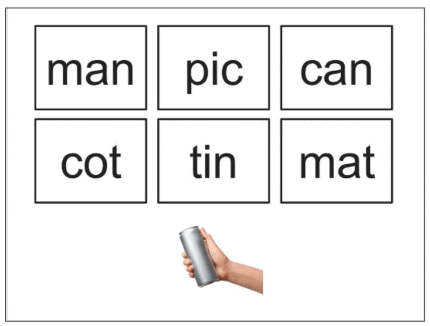
Holyfield, C., Pope, L., Light., J., Jakobs., E., Laubscher, E., McNaughton, D., & Pfaff, O. Effects of an augmentative and alternative communication technology decoding feature on single-word reading by individuals with Down syndrome and limited functional speech. American Journal of Speech-Language Pathology, 32 (3), 1195-1211. doi: 10.1044/2023_AJSLP-22-00255
This article describes how a decoding feature in the T2L program affects single-word reading. The words were targeted in adapted books with individuals with Down syndrome. Participants showed increased reading ability including decoding novel words.
Background
Full participation in life means engaging meaningfully in social, academic, and vocational contexts. Increasingly, being a full participant in these settings is possible in part through using literacy skills. Unfortunately, most adolescents and adults with Down syndrome and limited speech do not have functional literacy skills. Research shows that individuals with intellectual and developmental disabilities who do not have functional speech can develop foundational literacy skills in adolescence and adulthood.
The Current Article
The purpose of this study was to conduct a preliminary evaluation of a new AAC feature designed to support decoding skills. Three individuals with Down syndrome and limited speech participated in an adapted book reading targeting decoding meaningful CVC words. All three participants demonstrated increases in reading performance. Though no participant reached reading mastery, all demonstrated decoding novel words. This study provides preliminary evidence that an AAC technology feature that provides models of decoding (e.g., T2L) can support building decoding skills in individuals with Down syndrome. While not intended to replace instruction, this initial study offers initial evidence in its efficacy as a supplemental avenue for supporting literacy in individuals with developmental disabilities who use AAC.
“This [study] represents the first empirical evidence suggesting that a T2L AAC technology feature can be designed to support the development of decoding skills.”
Holyfield et al., (2023)
